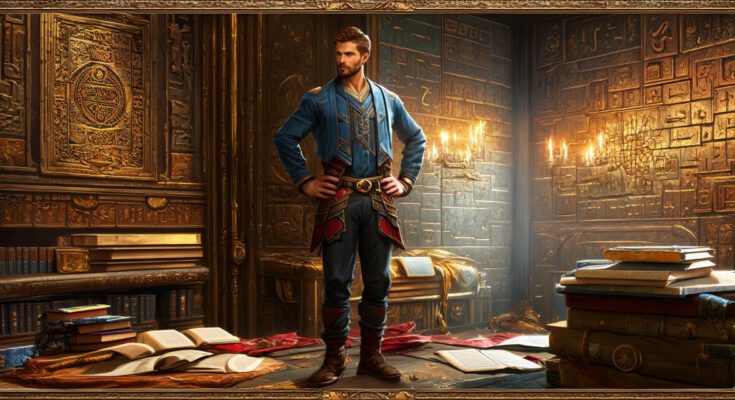Enigmas are fascinating puzzles that challenge our minds and stimulate our creativity. These riddles often involve hidden patterns or clues that require us to think outside the box and use our intuition to solve them. In this article, we will explore some of the most intriguing enigmas and provide tips on how to unravel their mysteries.
The Art of Solving Enigmas
Solving enigmas requires a combination of skills and approaches. Firstly, it is important to have a curious mindset and be open to new ideas. This means being willing to explore different perspectives and challenge your own assumptions. Secondly, it can be helpful to break down the problem into smaller parts and look for patterns or connections between them. Thirdly, using logic and reasoning can also be useful in deducing the solution.
One of the most famous enigmas is the Monty Hall Problem, which was first presented on the television show “Let’s Make a Deal.” In this puzzle, a contestant is shown three doors, behind one of which is a valuable prize. The contestant then selects a door, after which Monty opens one of the other doors to reveal a goat. The question then arises: should the contestant stick with their original choice or switch to the other unopened door?
The answer to this enigma may seem counterintuitive, but research has shown that it is actually more likely that the contestant will win the prize if they switch doors. This is because Monty’s action of opening a door provides additional information about the location of the prize. Specifically, if Monty opens a door that does not have the prize behind it, then the prize must be behind the remaining unopened door.
Another fascinating enigma is the Rubik’s Cube, which has captivated millions of people around the world since its invention in 1974. This puzzle involves manipulating a cube with six sides, each of which is covered by nine stickers that can be rotated in any direction. The goal is to solve the puzzle by aligning all the stickers with their corresponding colors on each side.
Solving the Rubik’s Cube requires a combination of skills and approaches, including spatial reasoning, problem-solving, and pattern recognition. One popular method for solving this enigma is called the Fridrich Method, which involves using specific algorithms to manipulate the cube in a step-by-step process.
Real-Life Examples of Enigmas
Enigmas are not just confined to puzzles and games; they can also be found in real-life situations. One example is the famous case of the Zodiac Killer, who terrorized Northern California in the late 1960s and early 1970s. The killer sent taunting letters to newspapers, including a notorious “Zodiac” letter that contained a cryptogram that has yet to be deciphered.
The Zodiac Killer’s letters have become one of the most famous unsolved mysteries in American history, with many theories about who the killer was and what his motives were. However, one thing is certain: the Zodiac Killer was a master of enigmas, using complex codes and ciphers to taunt law enforcement and evade capture.
Another real-life example of an enigma is the Bermuda Triangle, which is a region in the western part of the North Atlantic Ocean where numerous ships and aircraft have disappeared under mysterious circumstances. Some theories suggest that the disappearances are due to supernatural or extraterrestrial forces, while others propose more scientific explanations such as magnetic anomalies or human error.
Despite decades of investigation, the Bermuda Triangle remains one of the most enduring enigmas in popular culture, inspiring countless books, movies, and documentaries. The mystery of the Bermuda Triangle continues to captivate people around the world, with many seeking to unravel its secrets and understand what happened to the missing vessels and their crews.
Final Thoughts
Enigmas are fascinating puzzles that challenge our minds and stimulate our creativity. Solving these mysteries requires a combination of skills and approaches, including curiosity, problem-solving, and pattern recognition. Whether you’re interested in classic puzzles like the Monty Hall Problem or real-life enigmas like the Zodiac Killer or Bermuda Triangle, there is always something new to discover and learn.



